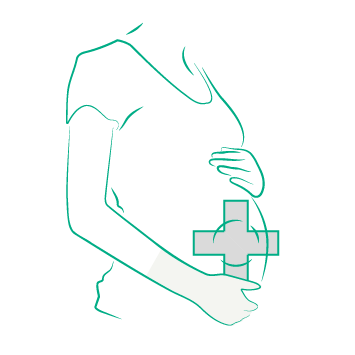
COVID-19 (Coronavirus) is a new pathogen of high contagious abilities.
Although males seem to be more affected than females, as yet very little is known about the effect of COVID-19 on pregnant women and infants.
Based on the only set of available COVID-19 data, being a small series of women from Wuhan, China, there is no evidence that pregnant women are more at risk than the general population and there is no evidence that the virus can be transmitted to the baby during pregnancy.
- Read more about COVID-19 (Coronavirus) Statement
- Log in to post comments
Organisations are beginning to recognise the need to address maternal mental health - but research suggests they should view it as a marathon, not a sprint.
Postpartum depression is a frequently overlooked issue, often passed off as 'the baby blues', or blamed on simple hormonal surges by those unfamiliar with its impact.
It can be an extremely serious problem for both mothers and infants, and one that is negatively affecting nations attempting to improve their maternal health statistics.
What is postpartum depression?
- Read more about New approaches to postpartum depression
- Log in to post comments
Hemolytic Disease is often fatal for the fetus or newborn and can cause late miscarriage, stillbirth, early post-natal death and life-long disabilities in surviving babies.
Fifty years ago, the discovery of Anti-D Immunoglobulins was a medical breakthrough that resulted in a dramatic reduction in the incidence of HDFN in many parts of the world.
In conversation with Dr Swati Naik, who refers to our President as the 'Father Figure of Obstetrics and Gynaecology' Professor Purandare highlights the controversy surrounding the numbers of caesarean sections being carried out when a normal delivery is necessary. He comments:
"People now feel that caesarean sections are safer than doing instrumental vaginal delivery, which is the wrong assumption"
- Read more about Caesarean Section Rates Going Up
- Log in to post comments
- Read more about FIGO Fellowship in Brazil
- Log in to post comments
Although great strides have been taken to decrease the maternal mortality ratio, women across the globe are still dying as a result of complications during pregnancy and childbirth.
That’s why it’s more important than ever to continue to work towards making childbirth safe for every woman — no matter what country she lives in, or what her socioeconomic status is.
- Read more about Every woman's right: a safe delivery
- Log in to post comments
With the growth of FIGO and the growth of National Member Societies from 42 in 1954 to 132 today, FIGO initiatives have expanded to encompass all medical and social issues relating to global women’s health.
- Read more about FIGO at 65: reducing maternal mortality
- Log in to post comments
At the launch in London, FIGO’s Honorary Secretary Prof Lesley Regan applauded these ambitious goals, and highlighted the role of OBGYNs in making them a reality:
Country-to-country learning and knowledge exchange are crucial to sharing best practices and facilitating the adoption of successful strategies for effecting change.
An update from the widely used 2017 guidance, the 2023 charts detail recommended dosages of mifepristone and misoprostol when used for a variety obstetrical indications, including induced abortion, missed abortion, incomplete abortion, cervical preparation before aspiration and D&E, fetal demise, induction of labour, prophylaxis and treatment of postpartum haemorrhage.
The charts have been revised and expanded by the FIGO Committee on Safe Abortion. The charts are available for download in English, French and Spanish.
Uploaded in December 2023.